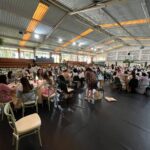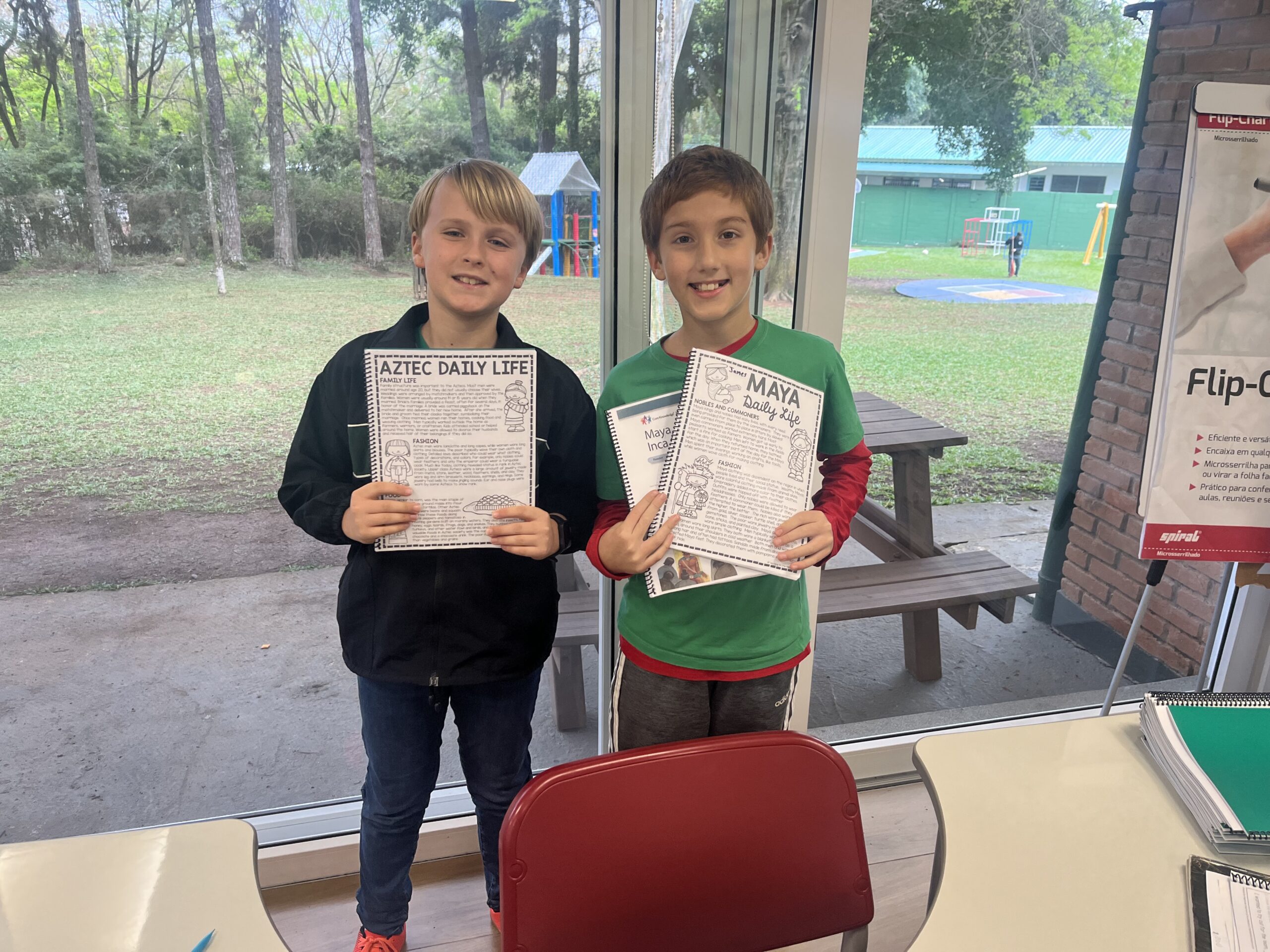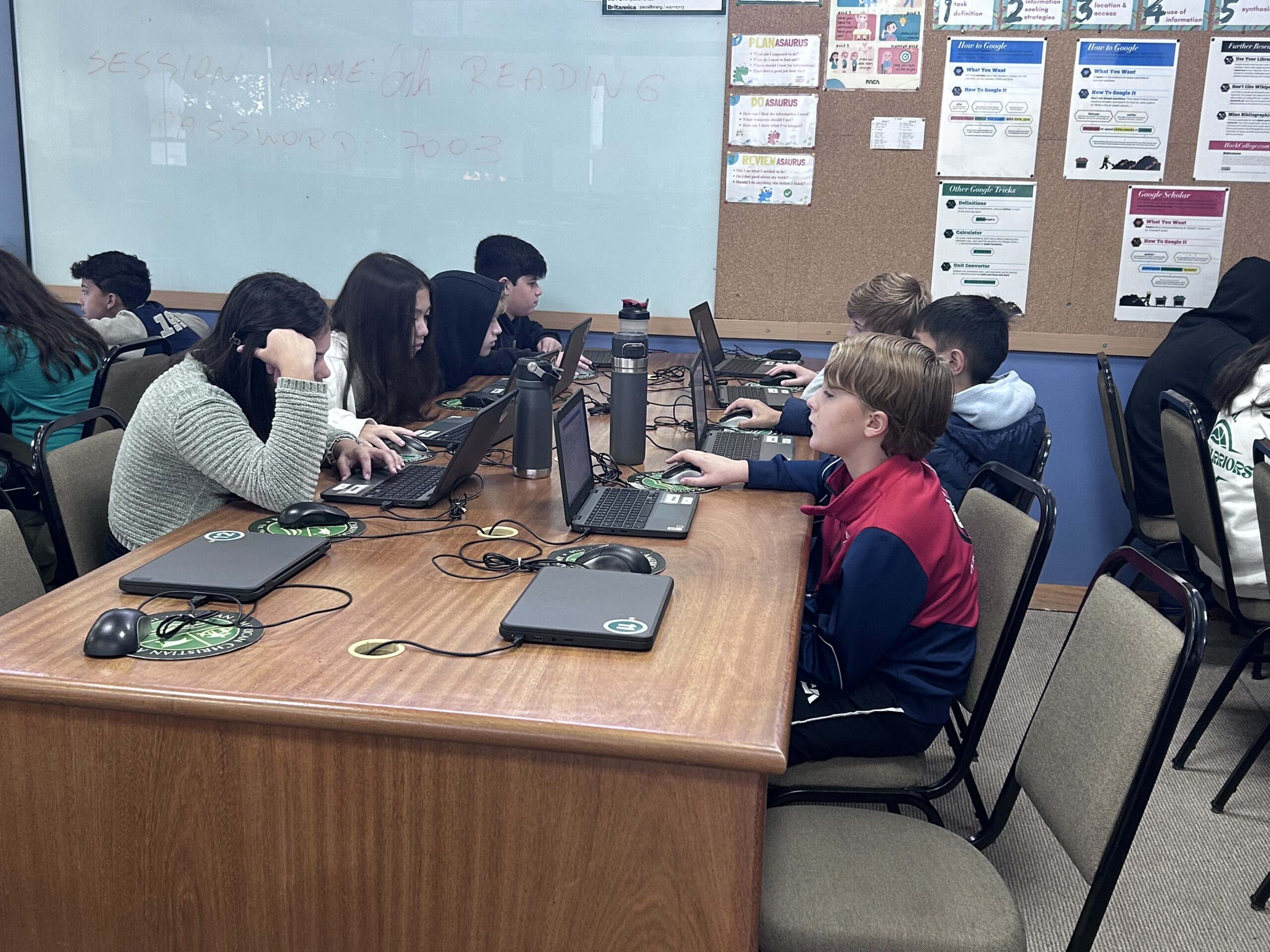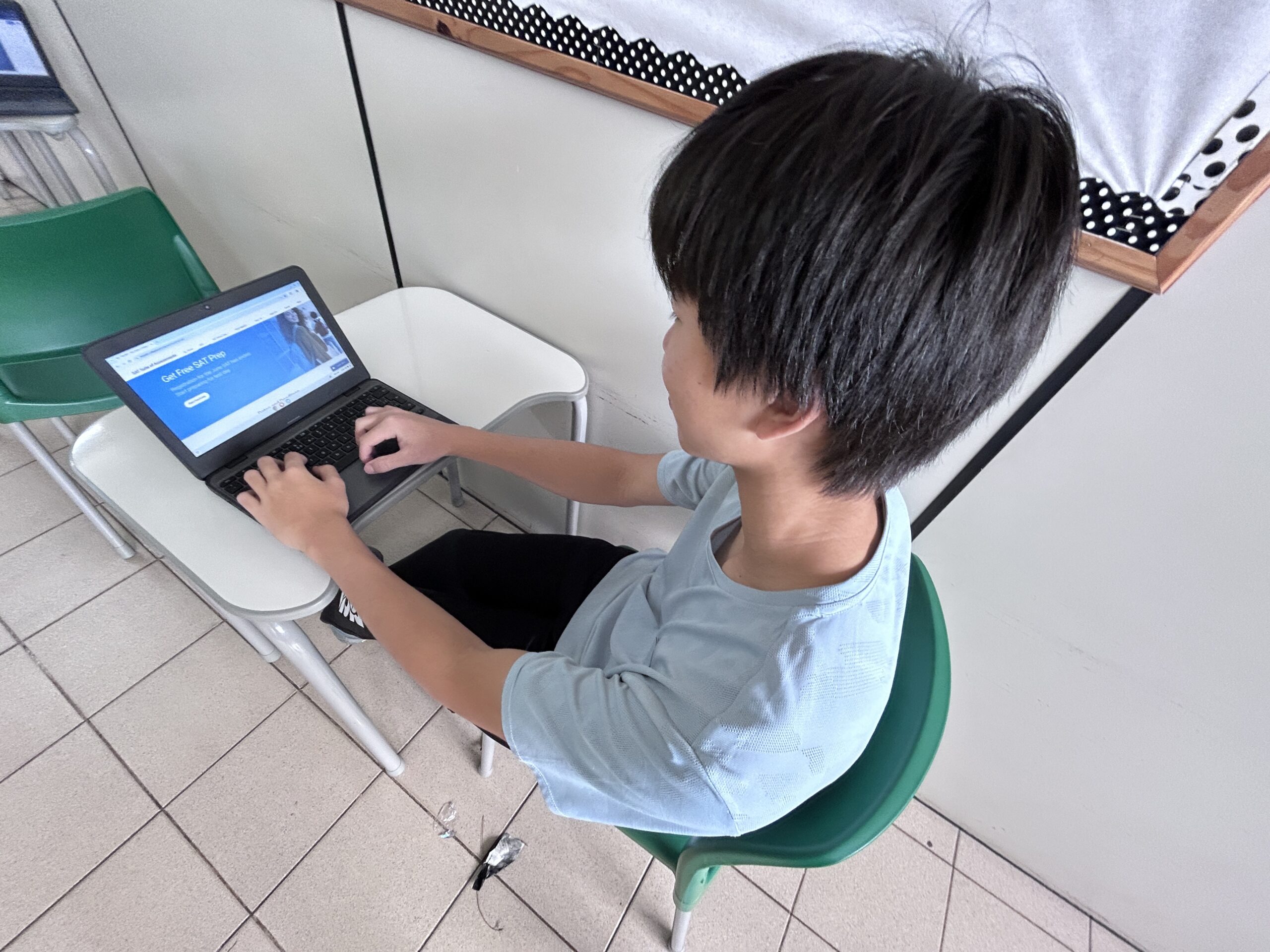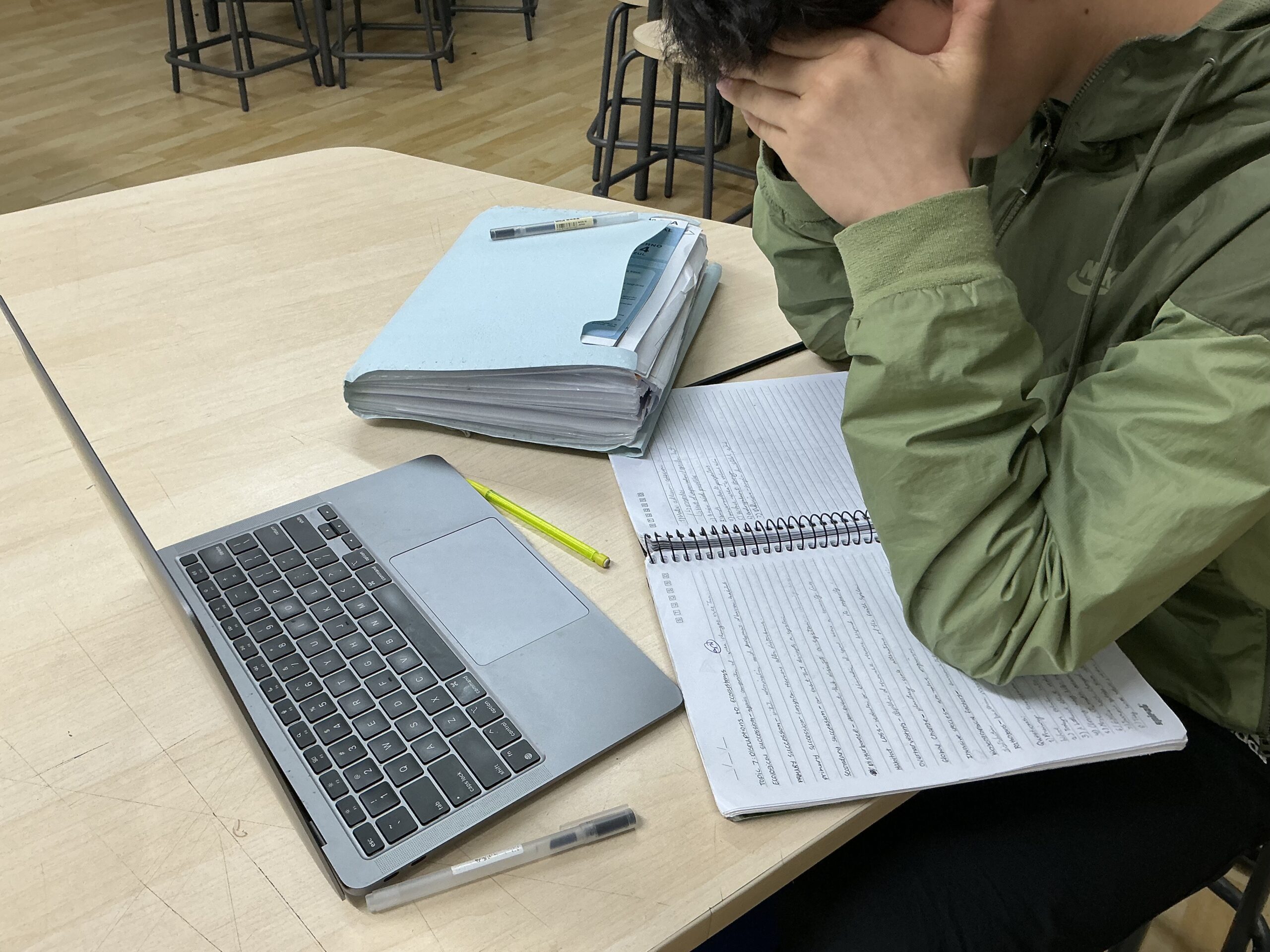Caption: Two of Mrs. Pedrozo’s fifth grade students, Seth Meier and James Swisher, hold up their social studies workbooks that they have been using to learn about the ancient Mayan and Aztec history. [by Lilian Pedrozo]
By Eric Zhang (Warrior Post Reporter / São Paulo, Brazil)
Fifth Grade teacher Lilian Pedrozo organized a Mexican food tasting test for her student’s fifth grade students at the end of the day on Friday, August 11, to complete a lesson in ancient Mayan and Aztec history.
Pedrozo explained that her idea was to let her students understand better how and what people ate in the 13th century.
“We are learning about the Mayans and Aztecs,” said Pedrozo, “That is why we are having the Mexican food testing.”
In order for her students to understand the daily life of these people groups, Pedrozo thought the best way was to let them experience the types of food they ate.
“We do not have so many things that they read about from the daily life of the Mayas and Aztecs,” said Pedrozo. “It is very important that they get to experience what they ate in the past.”
As part of the event, students were given the chance to eat nachos with guacamole and Todinho. The students were served in an organized manner, having them make a line and so the teacher gave each one plates with guacamole and nachos with a little Todinho juice box.
The students were offered plastic forks if they wished to use them. The students were seated on their respective desks before they sampled their dishes.
Some of the students liked the food because they were already familiar with eating it at home.
“I have already tried Todinho and chips,” said Rachel Penteado.
For other students, the flavor was different than what they thought it would be.
“It’s good, not what I expected,” said Malachi Greve.
The Mexican food tasting test also helped students learn better about the history of these old civilizations even though their food samples were a modern version of those historic dishes.
“I learned that people back then didn’t have so many varieties of food,” said Thomas Zhang, “and that what we are eating right now isn’t really what they ate back then.”
